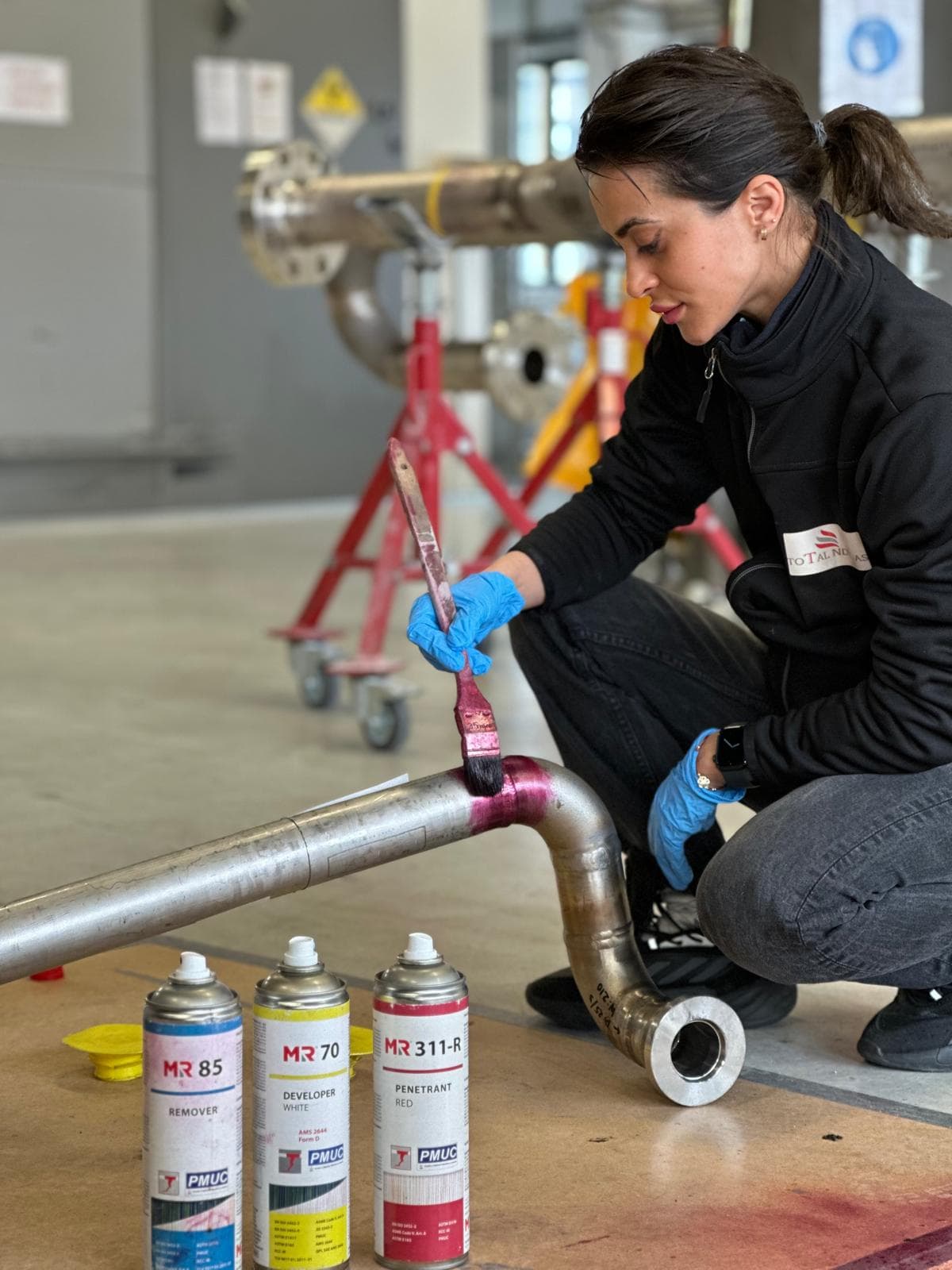
Hardness Testing
Hardness testing is a fundamental method used in materials science and engineering to assess the resistance of a material to indentation or penetration. This non-destructive testing (NDT) technique provides valuable insights into the mechanical properties and durability of materials, aiding in quality control, research, and failure analysis across various industries.
Types of Hardness Testing:
1. Rockwell Hardness Testing: This method involves applying a known force to an indenter (usually a diamond cone or a hardened steel ball) and measuring the depth of penetration into the material. The Rockwell hardness value is determined based on the depth of penetration, providing a reliable measure of material hardness.
2. Brinell Hardness Testing: Brinell hardness testing involves indenting a hardened steel ball into the surface of the material under a specified load. The diameter of the indentation is measured, and the Brinell hardness value is calculated based on the applied load and the surface area of the indentation.
3. Vickers Hardness Testing: Vickers hardness testing utilizes a pyramid-shaped diamond indenter to create a square-shaped indentation on the surface of the material. The diagonals of the indentation are measured, and the Vickers hardness value is calculated based on the applied load and the surface area of the indentation.
4. Knoop Hardness Testing: Knoop hardness testing is similar to Vickers hardness testing but uses a rhombic-based pyramid-shaped diamond indenter. This method is particularly useful for measuring the hardness of thin materials or small areas due to its ability to produce shallow, well-defined indentations.
Applications:
1. Metal Alloys: Hardness testing is commonly used to assess the hardness of metal alloys, including steel, aluminum, titanium, and copper alloys, to ensure they meet performance requirements for various applications.
2. Weld Inspection: Hardness testing is essential for evaluating the hardness of welds and heat-affected zones to detect potential issues such as weld defects or changes in material properties.
3. Surface Treatment Evaluation: Hardness testing can be used to assess the effectiveness of surface treatments such as heat treatment, plating, and coatings by measuring changes in material hardness before and after treatment.

Comprehensive analysis of material properties: strength, ductility, and wear resistance.
Straightforward results interpretation for immediate insights.
Other Services
Check out our other services
Radiography
Our radiography services are designed to provide you with the insights needed to make informed decisions.
Ultrasonic Inspection
Our ultrasonic inspection services are designed to ensure the safety and reliability of your assets.
Visual Inspection
Our visual inspection services are designed to provide you with the insights needed to make informed decisions.
Magnetic Particle Inspection
Our magnetic particle inspection services are designed to ensure the safety and reliability of your assets.
Liquid Penetrant Inspection
Our liquid penetrant inspection services are designed to provide you with the insights needed to make informed decisions.
Positive Material Identification
Our positive material identification services are designed to provide you with the insights needed to make informed decisions.





